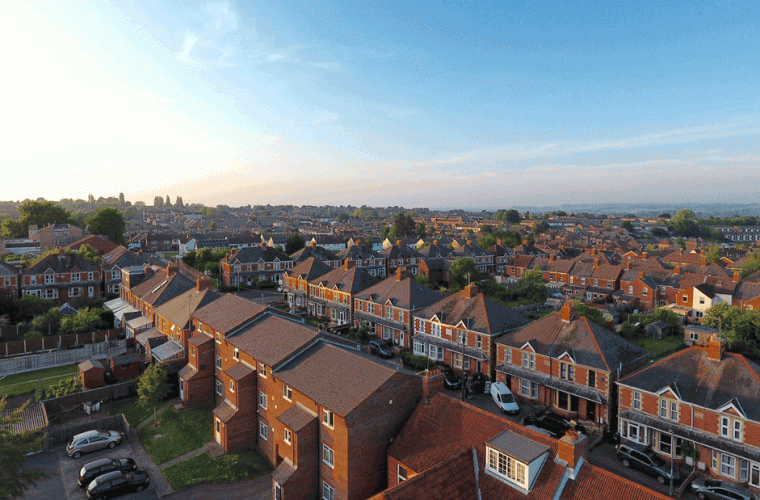The number of long-term empty homes has increased nationally by nearly 10 per cent over the past five years.

The number of long-term empty homes has increased nationally by nearly 10 per cent over the past five years, the equivalent of just over one per cent of the country’s housing stock, a new report commissioned by the Local Government Association reveals today.
The new report from the LGA and the Empty Homes Network has found that the numbers across all definitions, types and tenures of empty homes have risen steadily since the pandemic and have largely exceeded the figures seen in 2018.
The data shows that more than one million properties across England in 2022 were unoccupied (4.01 per cent of all dwellings), an increase of nearly 60,000 homes since 2018.
Despite the introduction of an empty homes premium in 2013, aimed at encouraging owners to bring empty properties back into use, along with efforts of councils, numbers continue to rise not only across England, but in Scotland and Wales also.
While many of these homes are yet to have reached a stage of deterioration that prompts concern or encourages decline, every empty home removes a property from the housing market and with it the chance for those on housing registers to be housed, first time buyers to purchase, or those looking to progress on the property ladder. At a time of critical housing need, both government and councils consider the supply of safe, affordable and sustainable housing as a top priority.
It comes at a time of significant ongoing challenges for councils to ensure that everyone can live in a home that meets their current and future needs. Frozen Local Housing Allowance (LHA) rates, the rising cost of living, the closure of Afghan bridging hotels, wider asylum and resettlement pressures, and an insufficient supply of affordable housing are driving increases in homelessness and reducing councils’ ability to source suitable accommodation.
There are currently more than one million people on council housing waiting lists and 104,000 households living in temporary accommodation. Even bringing just 10% of these empty homes back into use could help to find permanent homes for these households in temporary accommodation.
Cllr Darren Rodwell, Housing spokesperson for the LGA said:
“At a time when we face a chronic housing shortage across the country it is wrong for so many homes to be left empty. Councils work hard to address the issue, but the existing measures are clearly falling short.
“This report, and the best practice proposals and recommendations within it, aim to support councils in their efforts to reduce the numbers of empty homes, increase housing supply, encourage inward investment, and provide a better quality of life for residents and neighbours affected by the issues empty homes cause.
“Councils share a collective national ambition to tackle local housing challenges. The Government should also support this ambition by using the Autumn Statement to implement our six-point action plan so that councils can resume their historic role as a major builder of affordable homes.”
Adam Cliff, Secretary and Policy Lead for the Empty Homes Network, said:
“Empty Homes are a hugely wasted resource, and at over one million empty homes nationally, this figure represents the equivalent to the number of total dwellings in the city of Manchester.
“At a time where the demand housing is so high, working to bring empty homes back into use can not only support meeting this need, but can encourage inward investment, improve communities and enhance the lives of those who currently live near empty homes.
“This report aims to set a standard from which councils can build a solid foundation to deal with empty homes, and provides practical and evidence based ideas which will undoubtedly prove useful to councils and their officers.
“While the numbers across all empty homes categories have shown an increase over the past five years, the report aims to address this by equipping councils and officers with tools to assist in data cleansing, case progression and the overarching empty homes journey through the case progression flowchart.”
Notes to editors
- Empty homes are divided into five categories: less than six months empty, long-term empty, empty homes premium, second homes and unoccupied. By definition, an empty home is one that has no permanent occupier or can be defined as a property where the main resident lives elsewhere. As a standard practice, empty homes that have remained unoccupied for over six months from the moment of being informed by the owner are labelled as long-term empty. Given their category, these are the most likely to warrant concern and/or investigation by the council.
- The report - A practical approach for councils on dealing with empty homes also provides a host of practical tools that councils could consider implementing to support their efforts to bring empty homes back into use, as well as setting out how other local authorities are shaping their empty homes services. The recommendations are aimed at helping all councils to develop their own proactive approach to empty homes, whether they already have a well-established service or are looking to build one.
- Ahead of the Autumn Statement, the LGA is calling for the Government to go further and faster in order for councils to be able to properly resume their historic role as a major builder of affordable homes by implementing a six-point plan for social housing.
- The LGA’s Autumn Statement submission warns that councils in England face a funding gap of £4 billion over the next two years. In its submission to the Chancellor, the LGA said the Government needs to provide immediate funding so councils can deliver the 2023/24 budgets they set this year and ensure that councils have sufficient resources to set balanced budgets next year without having to make drastic cuts to services.
It is accompanied by appendices on key areas of council activity that are experiencing sharp financial and/or demand pressures (adult social care, children’s services and housing and homelessness support).
